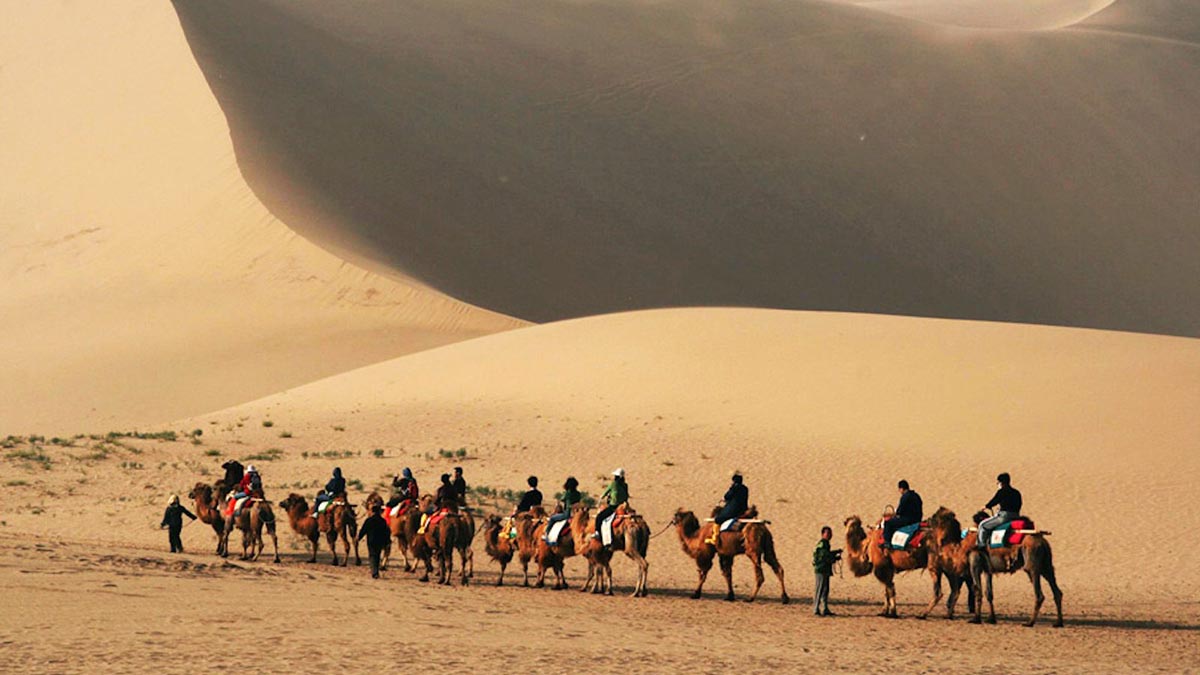Global Courant 2023-05-26 17:22:07
If G7 leaders As they prepared for their recent summit in Japan, Chinese President Xi Jinping hosted his Central Asian counterparts from Kazakhstan, Kyrgyzstan, Tajikistan, Turkmenistan and Uzbekistan.
Central Asia is critical to China’s efforts to build an alternative to the US-led liberal order, which is undeniably dominated by Beijing and in which Russia is, at best, a junior partner.
In his opening speech, Xi outlined his “vision of a China-Central Asian community with a shared future”. This is based on four principles: mutual aid, common development, universal security and eternal friendship.
Although the relationship between China and Central Asia is often framed in terms of security and development, it also has a political side. This is all reflected in the initiatives to increase regional cooperation launched at the Xi’an summit.
These propose links between Chinese ministries and government agencies and their counterparts in Central Asia, increasing educational and cultural exchanges and creating mechanisms such as the Central Asia-China Business Council. All of these are likely to further consolidate China’s dominant regional role.
In return, China will isolate the mostly authoritarian leaders of Central Asia against Western economic and political pressure to move towards democracy and protect their sovereignty and territorial integrity against any Russian adventurism.
Performance from the top
The summit resulted in no less than 54 agreements, 19 new cooperation mechanisms and platforms, and nine multilateral documents, including the Declaration of Xi’an.
Even if one were to dismiss most of these as uncertain prospects for actual execution, there can be no doubt about China’s regional significance.
According to UN statisticsFor example, the volume of trade in goods between China and the five countries in the region rose from just $460 million three decades ago to more than $70 billion by 2022 – a 150-fold increase.
Historically, Russia has been the main partner for Central Asia, dating back to the Soviet period and the first decade after the breakup. But Moscow can no longer match the value of Chinese investments and construction contracts in Central Asia, which now total nearly $70 billion since 2005.
A shift to China is also reflected in the declining importance of Russia’s regional integration project – the Eurasian Economic Union – compared to China’s huge global Belt and Road initiative. This program of infrastructure investment was launched by Xi in Kazakhstan in 2013 and has continued ever since drawn the region that is closer to China, not only economically but also politically.
Map: Shutterstock via The Conversation
The Belt and Road Initiative figured prominently in Xi’an’s statement, explicitly linking it to national development strategies in Central Asia. Transport connections remain central.
The countries at the summit recommitted to a China-Kyrgyzstan-Uzbekistan railway line, highways from China to Kyrgyzstan, Tajikistan and Uzbekistan, and transport infrastructure for trans-Caspian trade routes using seaports in Kazakhstan and Turkmenistan.
This focus on transport infrastructure in, and especially through, Central Asia highlights how important the region is to China’s efforts to diversify its trade routes to Europe away from Russia. It also means that for now, China will continue to use infrastructure development and trade to recruit more partners for its alternative international order.
The Russian “northern corridor” is now largely Closed as a result of war-related sanctions against Ukraine. So the route often referred to as the middle corridor gained importance not only for China, but especially for China the G7 countries.
However, the middle corridor, which starts in Turkey and continues through Georgia and through Central Asia, would be risky for China as the only alternative. Capacity is low (currently only about 5% of the Northern Corridor) because goods have to cross multiple borders and switch between road, rail and sea several times.
Afghan roll
Another alternative – with similar geopolitical significance – is transport through Afghanistan to the Arabian Sea via the Pakistani port city of Gwadar. In the long run, a trans-Afghan route is in the interests of both China and Central Asia.
It would contribute to (but also depend on) stability and security in Afghanistan. And it would increase China’s exposure to the risks related to the existing route along the China-Pakistan Economic Corridor, especially those resulting from the ongoing one Taliban insurgency in Pakistan.
In light of this, China and its Central Asian partners have committed to developing the transportation options of the Uzbek city of Termez, on the border with Afghanistan. China now also has an official position on the Afghan issue and Afghanistan was controlled by name by Xi in his speech on the top. So more regional involvement can be expected.
Despite the obvious risks associated with Afghanistan, China is likely to include a trans-Afghan trade route in its plans. This is also evidenced by the fact that Beijing seems reluctant to go along with Russia and Iran in turn international north-south transport corridor. Both Russia and Iran are facing severe international and recent sanctions tensions between Iran and Azerbaijan cast further doubt on the long-term viability of this route.
The enthusiasm with which the five Central Asian presidents have welcomed these initiatives shows their enthusiasm embrace China. However, it remains to be seen how sustainable or popular this approach is in the face of the size and widespread anti-China sentiment in the region.
Stephen Wolffprofessor of international security, University of Birmingham
This article has been republished from The conversation under a Creative Commons license. Read the original article.
Similar:
Loading…








